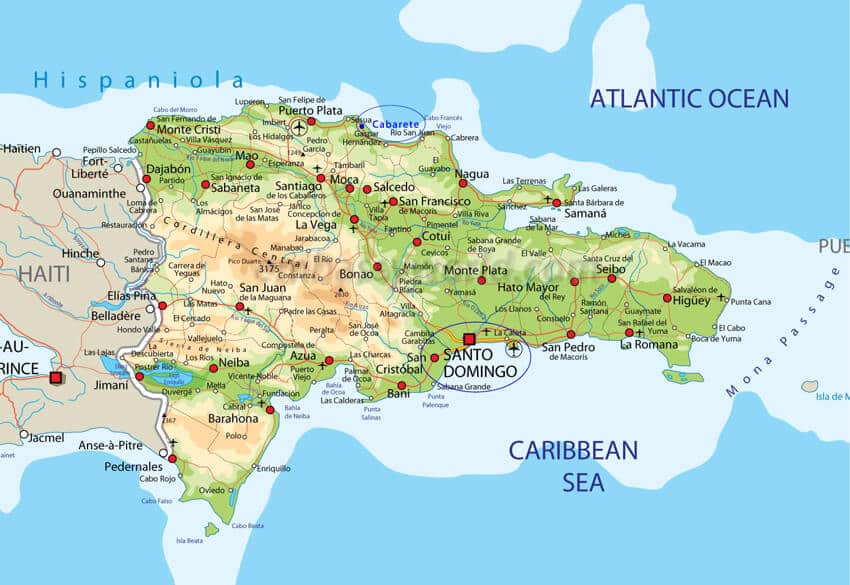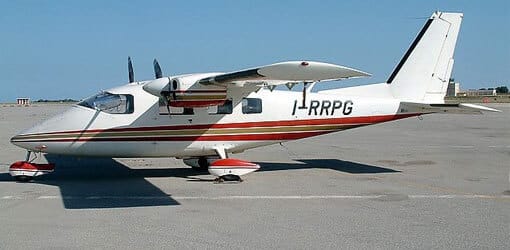Practical Information For Travelers To The Dominican Republic

- Climate
Because it is located in the Caribbean, the weather in the Dominican Republic is excellent all year round. During the summer, the temperature can range from 90 F (32 C) at midday to 70 F (21 C) at dawn. Temperatures can drop to a low of 65 F (18 C) in the winter. In the high mountainous areas of Jarabacoa and Constanza, the weather is cooler. In these areas, temperatures of 50 F (10 C) in the city in the early morning and below zero higher up in the mountains are not unusual.In the tropics, although rainstorms can happen at any time of the year, rains usually fall for just short periods in the afternoon and evening. The warmest months are June through September.This is all great and useful Practical Information For Travelers To The Dominican Republic
- Holidays (Non Business Days)
- January 1: New Year’s Day
- January 6: The Three Kings’ Day (religious)
- January 21: Our Lady of Altagracia Day (religious)
- January 26: Juan Pablo Duarte Day
- February 27: Independence Day
- March or April (varies) – Easter Friday (religious)
- May 1: Labor Day (celebrated on the closest Monday)
- June (varies) Corpus Christi Day (religious)
- August 16: Restoration of Independence Day
- September 24: Our Lady of Mercedes Day (religious)
- November 6: Constitution Day (celebrated on the closest Monday)
- December 25: Christmas Day (religious)
- Electricity
In the Dominican Republic, electric outlets are 110 volts, the same as in the United States and Canada. Because of this, visitors from other countries needing power adapters are advised to bring their own. - Embassies
For a list of foreign embassies in the Dominican Republic, see:For a list of overseas Dominican embassies, see: - Opening Times
Most businesses open at 8am or 9am until 5 or 6pm on business days and until 1pm on Saturdays. Large shopping centers in the cities usually close at 9pm and open on Sundays from 9am until 8pm. Restaurants usually remain open and serve food until midnight, Sunday to Thursday, and until 2am on Friday, Saturday and holidays. Inside the hotels, bars, discos and restaurants may remain open 24 hours a day. - Language
The official language is Spanish. English is widely spoken, and many tourist sector employees will be fluent in Italian, French, German, Russian and other languages as needed. - Money Matters Practical Information For Travelers To The Dominican Republic
The local currency is the Dominican peso (RD$). It comes in denominations of 1, 5, 10 and 25 peso coins and in 20, 50, 100, 200, 500, 1,000 and 2,000 notes. Dollars and euros can be readily exchanged in banks and authorized exchange offices across the country.There are restrictions on bringing more than US$10,000 in cash into the country and any sum over this value needs to be declared on the customs form. It is prohibited to leave the Dominican Republic with more than $10,000 US dollars or equivalent in cash. If you need large amounts of cash, it is more convenient to make a bank withdrawal when in the country. Banks are normally open from 8:30am to 4pm. In large shopping centers, some bank branches are open until 8pm. - Passports, Tourist Card & Visa
Citizens and residents of the United States, Canada and most European countries can enter the country with a 30-day tourist card, which can be bought when you enter the country for US$10 or €10. Anyone, regardless of nationality, may come into the Dominican Republic with a tourist card if they have any of the following valid visas in their passport: United States, Canada, United Kingdom or the European Union (Schengen). If you wish to extend your tourist card to 90 days, you will need to pay RD$2,500 to immigration when you leave the country. The exit tax is US$20.00, but this is usually included in the airline ticket.To see a list of the countries that require a visa to enter the Dominican Republic, visit:http://www.dgii.gov.do/tarjetaTuristica/EN/Support/faq/Paginas/default.aspx - Tips
Restaurant bills already include a ten percent tip. It is customary to give an additional 10% for good service. Most people do not tip taxi drivers, however if you feel so inclined for good service, a tip will certainly be appreciated. - Smoking Restrictions
Smoking is not allowed in most restaurants, clubs and enclosed premises. - Clothes
Dominicans like to dress elegantly; fashion, grooming and hygiene are very important. Depending on the occasion, Dominicans will dress either casually or formally. Around hotels and resorts, it is suitable to wear light clothing such as shirts, t-shirts, shorts, swimwear or dresses.From December through February, when the nights are cooler, you may need a light jacket.Do not assume that the weather will always be warm because even in a Caribbean island, warm clothes will be needed for traveling in the mountain areas, especially in the Central Mountain Range, where temperatures as low as 32 F (0 C) are regularly reported. In the mountain towns of Constanza and Jarabacoa the temperatures regularly will drop below 65C (18C) in the evenings. - Health
For a more comfortable stay, even if the day is cloudy, use sunblock as the Caribbean sun is very strong. All-inclusive hotels encourage eating and drinking, but moderation is recommended to avoid stomach upsets. Keep yourself hydrated by drinking water or natural liquids. Note that soft drinks do not count. If you feel unwell, visit a doctor. The tourist centers and all cities have health centers with modern medical services and most hotels have medical dispensaries with qualified personnel. - Traveling with Animals
Cats and dogs will need a health certificate from your country of origin, which is valid for at least 30 days. A rabies vaccination certificate is also required. Birds will need to be quarantined for ten days. For other animals, an import permit will be required from the National Department of Agriculture and Zoology. Always check with your accommodation provider regarding policies for pets. - Safety
Even though the Dominican Republic is one of the safest countries on the continent, you should still take the same precautions as when traveling to any new city:- Use the hotel safe to store your passport, money and other items of value.
- Keep a photocopy of your passport with you when you travel. Only take what is necessary along with you.
- When possible, take a credit card as well as cash.
- Do not leave articles of value, bag or briefcases in full view in vehicles, even when there is a security guard nearby.
- Avoid traveling at night, even on the main highways. If you are planning to go out at night, use the services of a taxi called from the hotel where you are staying.
- Specialized Touristic Security Corp (Cestur)
With special training for assisting tourists, Cestur is a joint initiative under the Ministry of Defense working in collaboration with the National Police and the Ministry of Tourism. Cestur offices are located in most tourist destinations. If you are the victim of a crime, Cestur can help you get to a police station so that you may file a police report and seek further assistance. Cestur headquarters are at Av. Gustavo Mejía Ricart and Teodoro Chasseriaux, El Millón. Tel. 809 222-2123 - Telephones Practical Information For Travelers To The Dominican Republic
The Dominican Republic uses the same call system as the United States. The main area code is 809, though there are also numbers that use 829 and 849 codes. You are required to dial ten digits for each call.Because most people now have cell phones, public phones are almost non-existent. It is advisable to have a phone when traveling independently in the Dominican Republic. You can buy a prepaid cell phone in the Dominican Republic with a local number for about US$42. The telephone companies that provide cell phone services are: Claro, Orange, Tricom and Viva. These same companies will sell wireless Internet gadgets for your laptop. You can purchase a phone in less than an hour at any shopping center. You may also change your telephone’s SIM card for a local one and use it on your own phone. It is not difficult to find a WiFi hotspot to connect to the Internet. - Inter-country Transport
There’s a large network of roads connecting towns and tourist destinations around the country. There is lovely lush green landscape along the Santo Domingo-Santiago-Puerto Plata highway. Check out the spectacular panoramic views of the sea and mountains along the route towards Barahona, or the interesting new route through the Los Haitises National Park hills leading to the Samaná Peninsula and the North Coast.The following land and air transportation options can help you travel around the Dominican Republic:LAND TRANSPORTATION
-
Practical Information For Travelers To The Dominican Republic
One of the advantages of traveling with a tour operator is that your airport-to-hotel and hotel-to-excursion transfers are likely to be prearranged.
Taxis
Taxis can be found at airports and hotels and can also be arranged in advance. Several taxi for call companies are listed in the telephone directory. They are a cost-effective way to get around. Taxis are safe and reliable option in Santo Domingo as well as in many inland towns. Inter-city taxis cost RD$200.
Car Rental
Various companies including several world brands offer their services at the main airports, tourist destinations and towns. Consider renting a vehicle to visit at your leisure the destinations and attractions that are located along the northern coast, the Samaná peninsula, La Romana and Punta Cana beaches.
Santo Domingo Subway (Metro)
The new modern Metro service began in 2009 and there are two lines. Avoid peak hours when they are packed with commuters. One of the lines goes north-south on the Máximo Gómez avenue and then east-west along the Correa y Cidrón avenue, passing the state university (UASD) on its way to the government building center at the Centro de los Héroes, where Congress, the Supreme Court of Justice and the Department of Migration, among other government offices are located. A subway card costs RD$30 with recharge starting at RD$20, the value of each trip: www.opret.gob.do/Estaciones.aspx
Low-Cost City Buses
Low-cost OMSA government buses travel along the main roads of Santo Domingo and Santiago, from 7am until 9pm. Similarly, there are other smaller privately-owned and operated buses called “guaguas” (bus) or “voladoras” (flyers), that travel scheduled routes and circulate around the main streets and avenues, stopping on request.
Public Cars or “Conchos” (Shared Taxis)
Concho cars or shared taxis are very similar to “guaguas” because they travel specific routes and stop at points requested by the passengers. You can find them in the capital as well as in towns and villages. Fares are usually RD$25 for the routes in which up to six passengers will be boarded. Consider a private taxi for an inter-city route costs RD$200.
“Motoconchos” (Motorbike Taxis)
Many young men in the Dominican Republic make a living by transporting passengers on their motorbikes. The service is used mostly for traveling relatively short distances, especially as the bikes can weave their way swiftly through traffic. The fare should be agreed beforehand.
Interurban Bus Service
It is not difficult to travel between different regions of the country. There are several private companies that can take you in comfortable modern buses at very reasonable prices. Make sure that you take a jacket as these buses tend to keep their air-conditioning at its lowest point.
The Metro Buses serves Santo Domingo, Santiago, Puerto Plata and Sosúa: www.metroserviciosturisticos.com
Caribe Tours has daily bus services from Santo Domingo to Barahona, Cabrera, Jarabacoa, Montecristi, Nagua, Puerto Plata, Rio San Juan, Samaná, Sánchez, Santiago, Santo Domingo, Sosúa and other towns in the Dominican Republic. Caribe Tours buses also travel to Port-au-Prince and Cap-Haitien in Haiti: www.caribetours.com.do
Expreso Bávaro has several departures to Santo Domingo during the day. Upon arrival to Punta Cana, the buses make several stops at hotels, tourist and shopping areas in Bávaro, Punta Cana. An affiliate of the company, Sitrabapu makes local stops departing from Veron in Higuey and La Romana. Sitrabapu also as a non-stop express route to La Romana: www.expresobavaro.com
Sichoem buses commute between La Romana and Santo Domingo with several departures from the La Romana stop next to the Shell gas station, Tel 809 556-4192. Asomiro offers a similar service with buses that need to be taken at the Av. Padre Abreu Km 1 stop, near La Gallera, Tel 809 556-9099.
Transporte Samaná (Asotrapusa) services Samaná with several departures during the day from its stations at Calle Barahona 129 or las Americas Expressway). Tel 809 687-1470.

DOMESTIC AIR TRANSPORTION
Helicopters
In Punta Cana, helicopters are a quick and comfortable way of getting to know the area and its 31 miles (50 km) of beaches. Helicopter companies fly to Santo Domingo and other destinations, connecting different cities and tourist points:
Domestic Flights
Charter flights can be arranged to and from the international airports of Punta Cana (PUJ), Santo Domingo (SDQ, JBQ), La Romana (LRM), Santiago (STI), Puerto Plata (POP), Samaná (AZS, ABA) and Barahona (BRX). Several small airports cater to domestic flights. These include: Arroyo Barril (ABA) in Samaná on the northeast coast Constanza (COZ) located in the central mountain region, Cabo Rojo (CBJ) in Pedernales on the southwest coast and Montecristi (MTC) on the northwest coast.
Table of distances between the towns and cities of the Dominican Republic:
From Santo Domingo to:
Travel Time
Distance Barahona 3 hrs. 124 miles (200 km) Boca Chica 40 mins. 22 miles (35 km) Jarabacoa 2 hrs. 97 miles (155 km) Juan Dolio 50 mins. 31 miles (50 km) La Romana 1 hr. 30 mins. 70 miles (113 km) Puerto Plata 3 hrs. 30 mins. 134 miles (215 km) Punta Cana 2 hrs. 15 mins. 120 miles (194 km) Samaná 2 hrs. 30 mins. 109 miles (176 km) Santiago 2 hrs. 96 miles (155 km) From La Romana to:
Travel Time
Distance Barahona 4 hrs. 30 mins 185 miles (297 km) Bayahibe 20 mins. 18 miles (27 km) Boca Chica 1 hr. 49 miles (79 km) Dominicus 30 mins. 22 miles (35 km) Jarabacoa 4 hrs. 97 miles (265 km) Juan Dolio 50 mins. 39 miles (63 km) Puerto Plata 5 hrs. 202 miles (325 km) Punta Cana 45 mins. 50 miles (81 km) Samaná 3 hrs. 153 miles (246 km) Santiago 3 hrs. 167 miles (268 km) Santo Domingo 1 hr. 30 mins. 68 miles (110 km) From Puerto Plata to: Travel time
Distance Barahona 7 hrs. 227 miles (365 km) Boca Chica 4 hrs. 199 miles (320 km) Jarabacoa 2 hrs. 68 miles (109 km) Juan Dolio 4 hrs. 20 mins. 165 miles (265 km) La Romana 5 hrs. 202 miles (325 km) Punta Cana 5 hrs. 30 mins. 254 miles (409 km) Samaná 3 hrs.30 mins. 249 miles (400 km) Santiago 1 hr. 36 miles (58 km) Santo Domingo 3 hrs. 30 mins. 109 miles (176 km) From Punta Cana to: Travel time
Distance Barahona 5 hrs. 30 mins. 255 miles (410 km) Boca Chica 1 hr. 40 mins. 99 miles (160 km) Jarabacoa 3 hrs. 45 mins. 213 miles (342 km) Juan Dolio 1 hr. 45 mins. 89 miles (144 km) La Romana 45 mins. 50 miles (81 km) Puerto Plata 5 hrs. 30 mins. 254 miles (409 km) Samaná 4 hrs. 203 miles (327 km) Santiago 4 hrs. 30 mins. 217 miles (349 km) Santo Domingo 2 hrs. 15 mins. 120 miles (159 km) From Samaná to: Travel time
Distance Barahona 5 hrs. 30 mins. 225 miles (362 km) Boca Chica 2 hrs. 30 mins. 106 miles (170 km) Jarabacoa 3 hrs. 206 miles (331 km) Juan Dolio 2 hrs. 30 mins. 114 miles (183 km) La Romana 3 hrs. 153 miles (246 km) Puerto Plata 3 hrs. 30 mins. 133 miles (214 km) Punta Cana 4 hrs. 203 miles (327 km) Santiago 3 hrs. 15 mins. 120 miles (193 km) Santo Domingo 2 hrs. 30 mins. 96 miles (155 km) - For More Information
The Ministry of Tourism has 20 Tourist Offices in the United States, Canada, Europe, South America and Puerto Rico. www.godominicanrepublic.com/contactSocial Media: The Ministry of Tourism has multiple social media platforms: Facebook, Twitter, YouTube, Google+, Instagram and Pinterest.

